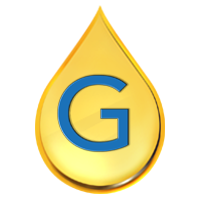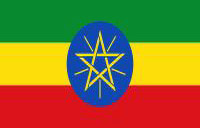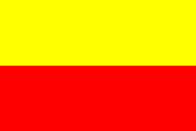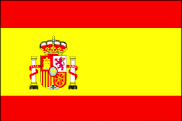
Roald Hoffmann Ph.D.
The Nobel Prize in Chemistry 1981
Nobel Prize also awarded to Kenichi Fukui
National Medal of Science - Chemistry 1983 USA
Chemist, Poet, Philosopher, Writer, Chemistry Teacher Text/Television.
Vita
In 1982 he received the ACS Award in Inorganic Chemistry sponsored by the Monsanto Company. In 1983 he was awarded the National Medal of Science, and in 1986 the Dickinson College Award in memory of Joseph Priestley and the National Academy of Sciences Award in the Chemical Sciences. In 1990 he received the Priestley Medal of the American Chemical Society, its highest honor. In 1991 Dr. Hoffmann received the first (and last) Gold Medal in honor of N.N. Semenov, awarded by the Academy of Sciences of the USSR. In 1994 he received the Centennial Medal of the Graduate School of Arts and Sciences of Harvard University. In 1996 he received the Pimentel Award in Chemical Education of the American Chemical Society. In 1997 Dr. Hoffmann received the first Elizabeth A. Wood Science Writing Award of the American Crystallographic Association. In 1998 Prof. Hoffmann received the Jawaharlal Nehru Birth Centenary Award of India. In 1999 he was made an Honorary Member of the German Chemical Society, and in 2002 he was made Honorary Member of the Chemical Society of Japan. In 2006 he received the Gold Medal of the American Institute of Chemists. In 2009, he received the Grady-Stack Award for Interpreting Chemistry for the Public and the Public Service Award of the National Science Board.
In 1977 Dr. Hoffmann received an honorary Doctor of Technology degree from the Royal Institute of Technology, Stockholm, Sweden, on the occasion of their 150th anniversary. He has been awarded honorary Doctor of Science degrees from Yale University (1980); University of Hartford (1982); Columbia University (1982); City University of New York (1983); University of Puerto Rico (1983); Universidad de la República-Uruguay (1984); University of La Plata, Argentina (1984); SUNY at Binghamton (1985); Colgate University (1985); Univ. of Rennes, France (1986); Ben Gurion University of the Negev, Beer Sheva, Israel (1989); Lehigh University (1989); Carleton College (1989); University of Maryland (1990); University of Arizona (l991); Bar-Ilan University (l99l); University of Central Florida (1991); University of Athens (1991); University of Thessaloniki (1991); University of St. Petersburg (1991); University of Barcelona (1992), Ohio State University (1993), Northwestern University (1996), The Technion (1996), Brandeis University (1997), Georgetown Univ. (2000), Durham University (2000), Luther College (2001), Gustavus Adolphus College (2001), Nagoya University (2003), Duke University (2005).
Professor Hoffmann has been a Centenary Lecturer of the Chemical Society, the John William Draper Lecturer at Hampden-Sydney College, the Corn Products Lecturer at Pennsylvania State University, the Lucy Pickett Lecturer at Mt. Holyoke College, the 3M Lecturer at the Univesity of Minnesota, the Steward Lecturer of Notre Dame, the Venable Lecturer at the University of North Carolina, the Arthur D. Little Lecturer at Northeastern University, the Centennial Lecturer at Loyola University, the Seydel-Wooley Lecturer at Georgia Tech, the Friend E. Clark Lecturer at the University of West Virginia, The Werner Lecturer at the University of Kansas, the Lind Lecturer of the East Tennessee Section of the American Chemical Society, the Killpatrick Lecturer at Ilinois Institute of Technology, the American Cyanamid Lecturer at the University of Connecticut, the Walker-Ames Lecturer at the University of Washington, the first Jeremy Musher Lecturer at Hebrew University, Jerusalem, the Barton Lecturer at the University of Oklahoma, the FMC Lecturer at Princeton, the Renaud Lecturer at Michigan State University, the Abbott Lecturer at the University of North Dakota, the Five College Lecturer, the Merck Lecturer at Rutgers, the Sherwin-Williams Lecturer at the University of Illinois, the Falk-Plaut Lecturer at Columbia, the G. N. Lewis Lecturer at the University of California at Berkeley, the Phi Lambda Upsilon Rho Chapter Lecturer at the University of Nebraska, the Liebig Lecturer at the University of Colorado, the Remsen Lecturer at Johns Hopkins, the Camille and Henry Dreyfus Distinguished Lecturer at Rice University, Carleton College, Bryn Mawr College, Dartmouth College, Franklin and Marshall College, University of Wisconsin, The Silliman Lecturer at Yale, the Stieglitz Lecturer at the University of Chicago, the John Stauffer Lecturer at the University of Southern California, Mack Memorial Award Lecturer at Ohio State University, Gerhard Schmidt Memorial Lecturer at the Weizmann Institute of Science, the Mobay Lecturer at the University of Pittsburgh, the Thomas A. Edison Memorial Lecturer at the Naval Laboratory, the first du Pont Lecturer at the du Pont de Nemours Company, Hill Memorial Lecturer at Duke University, Gooch-Stephens Lecturer at Baylor University, Boomer Lecturer at University of Alberta, Gilman Lecturer at Iowa State University, R. B. Woodward Visiting Professor at Harvard University, GAF Lecturer at Lehigh University, H. Martin Friedman Lecturer at Brooklyn College, McGregory Lecturer at Colgate University, Walter Kaskan Memorial Lecturer at SUNY Binghamton, the Dakin Memorial Lecturer at Adelphi, the Robbins Lecturer at Pomona College, the Arthur Birch Lecturer at Australian National University, the Chemistry Lecturer of the Royal Swedish Academy of Engineering Sciences, Timothy J. O'Leary Distinguished Scientist at Gonzaga University, Carl M. Stevens Lecturer at Washington State University, the Nyholm Lecturer of the Royal Society of Chemistry, the 11th Annual J. T. Baker Nobel Lecturer at Cambridge University, the Flygare Lecturer at the University of Illinois, the Frontiers in Science Lecturer at Ohio State University, the Kohnstamm Prize Lecturer at Columbia University, the Milton Kohn Lecturer at the University of New Mexico, the Ames Lecturer at the University of Edinburgh, the F.G.A. Stone Lecturer at the University of Bristol, the Baxter Lecturer at Northern Illinois University, the Reid and Polly Anderson Lecturer at Denison University, Seonam Lecturer at Seoul National University, President's Lecturer at Rice University, Maryland/Grace Distinguished Lecturer at the University of Maryland, Plant Lecturer at Hamilton College, Morgan Lecturer at Appalachian State University, Alix Mautner Lecturer at UCLA, Convocation Speaker at Berea College, Matsen Lecturer at the University of Texas, Arthur Sweeney Jr. Lecturer at Lehman College, DuPont Marshall Lecturer at the University of Pennsylvania, Dibner Library Lecturer at the Smithsonian Institution Libraries, Probst Lecturer at Southern Illinois University at Edwardsville, Kolthoff Lecturer at the University of Minnesota, Liao Ying-Ming Foundation Lecturer at Feng Chia University, Yuan Tse Lee Foundation for Excellence Lecturer at several Taiwanese universites, Laird Lecturer and Cecil H. And Ida Green Lecturer at the University of British Columbia, as well as numerous other lectureships. In 1971 Dr. Hoffmann was elected a member of the American Academy of Arts and Sciences, and in 1972 a member of the National Academy of Sciences. He was an elected member of the council of the NAS, 1987-90. In 1978 he was elected to the International Academy of Quantum Molecular Sciences and in 1983 a Foreign Fellow of the Indian National Science Academy. In 1984 he was elected a Foreign Member of the Royal Society and a member of the American Philosophical Society, in 1985 a Foreign Member of the Royal Swedish Academy of Sciences, in 1988 a Foreign Member of the Societas Scientarum Fennica and the Academy of Sciences of the USSR, in 1998 a Corresponding member of the Nordrhein-Westfällische Academy of Sciences, and in 2000 a member of the Deutsche Akademie der Naturforscher Leopoldina. In 1989 Dr. Hoffmann was elected an Honorary Member of the Royal Institution. He is an Honorary Fellow of the Royal Society of Chemistry. He is an Overseas Fellow of Churchill College, Cambridge, England.
In 1966-68 Dr. Hoffmann was the recipient of a Sloan Foundation Research Fellowship and in 1978 of a Guggenheim Fellowship. He has been a visiting professor at the College de France. In 1986-87 he served as the Tage Erlander Professor of the Swedish Research Council, lecturing at the Universities of Stockholm, Lund, Uppsala and Gothenburg.
Roald Hoffmann is a member of the American Chemical Society, and a Fellow of the American Physical Society. He has served on the Editorial Advisory Boards of Chemical Reviews, Accounts of Chemical Research, Nouveau Journal de Chimie, the Journal of the American Chemical Society, Langmuir, and Organometallics. From 1970 to 1974 he was a member of the Advisory Panel for Chemistry of the National Science Foundation. Dr. Hoffmann has been a consultant for Tennessee Eastman Company, Eastman Kodak Company, Eli Lilly Company, John Wiley and Sons, Inc., Allied Chemical Corporation, and the du Pont de Nemours Company. He has also been a Director of the National Patent and Development Corporation. Dr. Hoffmann was a member of the Smithsonian Council, and is a member of the Board of Overseers of the Chemical Heritage Foundation. In 1986-88 Dr. Hoffmann participated in the production of a television course in introductory chemistry. "The World of Chemistry" is a series of 26 half-hour episodes developed at the University of Maryland and produced by Richard Thomas. The project has been funded by the Annenberg Foundation - Corporation for Public Broadcasting. Dr. Hoffmann is the Presenter for the series, which began to be aired on PBS in 1990. "The World of Chemistry" continues to be used in hundreds of US classrooms, and abroad.
Dr. Hoffmann's research interests are in the electronic structure of stable and unstable molecules across the periodic table, and of transition states in reactions. He applies a variety of quantum chemical computational methods as well as qualitative arguments to problems of structure and reactivity of both organic and inorganic molecules of medium size and to extended systems in one-, two-, and three dimensions. His first major contribution was the development of the extended Hückel method (in collaboration with the Lipscomb group), a molecular orbital scheme which allowed the calculation of the approximate electronic structure of molecules, and which gave reasonable predictions of molecular conformations and simple potential surfaces. These calculations were instrumental in a renaissance of interest in electrons and their properties.
Roald Hoffmann's second major contribution was a two-pronged exploration of the electronic structure of transition states and intermediates in organic reactions. In a fruitful collaboration with R. B. Woodward of Harvard University, he applied simple but powerful arguments of symmetry and bonding to the analysis of concerted reactions. These considerations have been of remarkable predictive value and have stimulated much productive experimental work. In the second approach Dr. Hoffmann analyzed with the aid of various semiempirical methods the molecular orbitals of most types of reactive intermediates in organic chemistry - carbonium ions, diradicals, methylenes, benzynes, etc. Important concepts such as through-bond coupling, and hyperconjugative orbital interaction came out of this work, as well as the general concept of frontier orbital control.
Dr. Hoffmann and his collaborators then explored the structure and reactivity of inorganic and organometallic molecules. Approximate molecular orbital calculations and symmetry-based arguments were applied by his group to explore the basic structural features of every kind of inorganic molecule, from complexes of small diatomics to clusters containing many transition metal atoms. A particularly useful theoretical device, the conceptual building up of complex molecules from MLn fragments, has been used by the Hoffmann group to analyze cluster bonding and the equilibrium geometries and conformational preferences of olefin and polyene metal carbonyl complexes. A satisfactory understanding of the mode of binding of essentially every organic ligand to a metal-ligand aggregate is now available, and a beginning has been made on organometallic reactivity with the exploration of potential energy surfaces for ethylene insertion, reductive elimination and alkyl migrative insertion reactions. Several new structural types, such as the triple-decker and porphyrin sandwiches, were predicted, and have been synthesized.
On the more inorganic side, Dr. Hoffmann and his coworkers systematically explored the geometries, polytopal rearrangements and substitution site preferences of five, six, seven and eight coordination, the factors that influence whether certain ligands will bridge or not, the constraints on metal-metal bonding, and the geometry of uranyl and other actinide complexes. An important conceptual advance from the Hoffmann group has been the isolobal analogy, a mapping onto each other of the most important fragments of organic and inorganic chemistry. The analogy is most useful for seeing structural similarities between organic and inorganic molecules, often unexpected ones. But it also serves as a guide to reactivity and synthesis. The isolobal analogy was the subject of Hoffmann's Nobel Lecture.
In recent times, Hoffmann has looked at the electronic structure of extended systems in one-, two-, and three dimensions. Frontier orbital arguments find an analogue in this work in densities of states and their partitioning. An especially useful tool, the COOP curve, has been introduced by the Hoffmann group. This is the solid state analogue of an overlap population, showing the way the bond strength depends on electron count. The group has studied molecules as diverse as the platinocyanides, Chevrel phases, transition metal carbides, displacive transitions in NiAs, MnP and NiP, new metallic forms of carbon, the making and breaking of bonds in the solid state and many other systems. One focus of the solid state work has been on surfaces, especially on the interaction of CH4, acetylene and CO with specific metal faces. The group has been able to carry through unique comparisons of inorganic and surface reactions. More recently, the design of new networks, novel conducting materials, and possible superconductors has been the main focus of the Hoffmann group. His work has ranged between novel organic polymers, complex intermetallics with more than 1000 atoms per unit cell, and the building of a chemical intuition for matter under high pressure. "Applied theoretical chemistry" is the way Roald Hoffmann likes to characterize the particular blend of computations stimulated by experiment and the construction of generalized models, of frameworks for understanding, that is his contribution to chemistry.
At Cornell University, Dr. Hoffmann has taught primarily undergraduates and indeed almost every year since 1966 has taught first-year general chemistry. He has also taught chemistry courses to non-scientists and graduate courses in bonding theory and quantum mechanics.
The following students have received their Ph.D. at Cornell under his direction: Chien-Chuen Wan, David Hayes, Jerrald Swenson, James Howell, Maynard M. L. Chen, David L. Thorn, B. E. R. Schilling, Charles N. Wilker, David M. Hoffman, Timothy R. Hughbanks, Sunil D. Wijeyesekera, Shen-shu Sung, Chong Zheng, Ralph A. Wheeler, Marja C. Zonnevylle, Yat-Ting Wong, Edith A. Chan, Jing Li, Zafiria Nomikou, Kimberly Lawler, Michael Bucknum, Qiang Liu, Hugh Genin, Grigori Vajenine, Gregory Landrum, Abds-Sami Malik, Erika Merschrod, Garegin Papoian, Wingfield Glassey, Ying Wang, Melania Oana, Mihaela Bojin, Daniel Frederickson, Pradeep Gutta, Chinmoy Ranjan, Nicholas Gerovac, Ji Feng, Anne Poduska, and Robert Berger.
Undergraduates working in his group have included over the years Warren Hehre, Stephen Goldberg, Roy R. Gould, Peter Rossky, Karen Goldberg, Robert Weber, Geoffrey Zeiss, Chris Zeiss, Leigh Ann Henderson, Mikhail Velikanov, Lori Rayburn, Jeffrey R. Long, Aliya Courtney, Pooja Pathak, Georgios Markopoulos, Tomasz Jarón, and Thomas Cahill.
Among his postdoctoral collaborators have been Patricia Clark, George Van Dine, Mircea Gheorghiu, Akira Imamura, Rolf Gleiter, Robert Bissell, S. Swaminathan, Donald Boyd, James Williams, Robert Davidson, Brian G. Odell, Charles C. Levin, Lawrence Libit, Victor Neagu, Wolf-Dieter Stohrer, Angelo Rossi, Alfred Anderson, Phillip Mollère, Hiroshi Fujimoto, C. Stephen Kim, Jack C. Thibeault, Notker Rösch, P. Jeffrey Hay, Mihai Elian, Alain Devaquet, Joseph W. Lauher, Richard H. Summerville, Daniel L. DuBois, Thomas A. Albright, Peter Hofmann, Prem Mehrota, Heinz Berke, Alain Dedieu, Myung-Hwan Whangbo, Armel Stockis, E. D. Jemmis, Sason Shaik, Richard Goddard, Odile Eisenstein, Kazuyuki Tatsumi, Pavel Kubacek, Zdenek Havlas, Christian Minot, Miklos Kertesz, Jean-Yves Saillard, Georges Trinquier, Boris Schubert, Richard Dronskowski, Yuri Slovokhotov, Ruslan Minyaev, Karl Anker Jørgensen, Jerome Silvestre, Santiago Alvarez, Douglas Keszler, William Bleam, Wolfgang Tremel, Dragan Vuckovic, Susan Jansen, Kenneth Merz, Jr., Jean-François Halet, Roy Johnston, Paul Sherwood, Christoph Janiak, Lalitha Subramanian, Meinolf Kersting, Christian Kollmar, Haibin Deng, Vladimir Pichko, Lars A. Bengtsson, Thomas R. Ward, William A. Shirley, Andrei L. Tchougreeff, Hans-Jürgen Meyer, Katrin Albert, Pere Alemany, Yuri Slovokhotov, Birgit Schiøtt, Davide Proserpio, Kazunari Yoshizawa, Gerhard Nuspl, F. Matthias Bickelhaupt, Udo Radius, Norman Goldberg, Huang Tang, Ruedi Rytz, Peter Kroll, Robert Konecny, Ralf Stowasser, Dong-Kyun Seo, Wojciech Grochala, Andrea Ienco, Pattath Pancharatna, M.M. Balakrishnarajan, Beate Flemmig, Gabriel Merino, Dean Tantillo, Peter Kroll, Marketa Munzarova, Kelling Donald, Jason D'Acchioli, Edyta Brzostowska, and Eva Zurek.
Senior visitors to his group have included Nguyen Trong Anh, D. M. P. Mingos, Jeremy Burdett, Paul Dobosh, John Eisch, Clifford McGinn, Victor Tortorelli, Evgeny Shustorovich, Robert Bach, Richard Harcourt, San-Yan Chu, Helga Dunken, Joel Bernstein, Yuansheng Jiang, Yitzhak Apeloig, Debbie Fu-tai Tuan, Daniel Zeroka, Reinhard Nesper, Jingling Huang, Maria José Calhorda, P. A. Cox, John Lowe, Mikhail Basilevsky, Peter Kazmaier, Vladimir Minkin, Gion Calzaferri, Boris Simkin, Maria Matos, Hassan Rabaâ, Donald H. Galván, Sung Hong, Kee Hag Lee, Deborah Huntley, Carol Parish, Valeria Rozenberg.
Discover Your Abilities and Aspirations!
 $10 $25 $50 $100 Other
$10 $25 $50 $100 Other
Tax Exempt 501(c)3 Non-Profit Organization
Any Currency
“…the peace that is found in libraries and laboratories…” - Louis Pasteur
Copyright © 2023 Ganga Library Inc. All Rights reserved.;

Photo: Courtesy Dr.Roald Hoffmann
Name: Roald Hoffmann
Birth: 18 July 1937, Zloczov, Poland (now Ukraine)
Institution: Cornell University, Ithaca, NY, USA
Award: "for their theories, developed independently, concerning the course of chemical reactions"
Subject: theoretical chemistry
Portion of cash: 1/4
National Medal of Science - Chemistry 1983 USA
Biography
Vita
Publications Scientific
Publications Other than Science and Poetry
Publications Poetry
Interviews
Photos
Patent: Dr. Hoffmann has not patented his work
External Resources - Text/Videos













